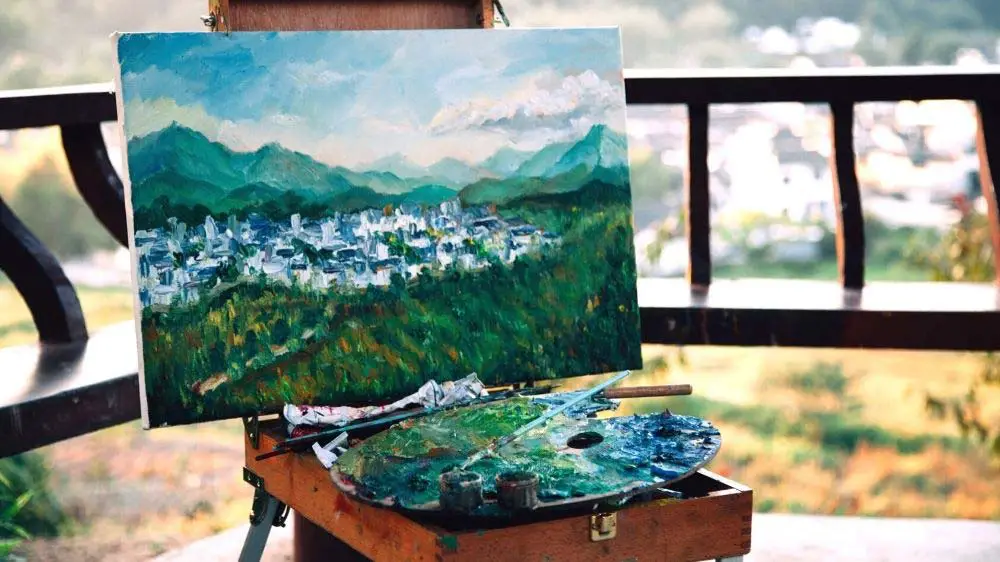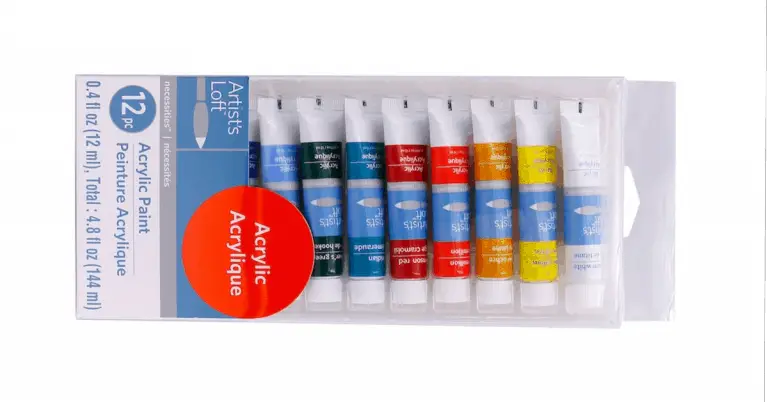Do Oil Paintings Melt In Heat? (What You Need to Know)
As an artist, I’ve learned a lot about working with oil paints and their particular quirks. There are some things to remember even when the painting is done.
After spending a lot of time or money on an oil painting, naturally, you’ll want to display it in your home. But, what happens if the room you’d like to hang your painting in has a lot of direct sunlight or is very hot? Will the sun or heat cause your oil painting to melt?
An oil painting exposed to sun and heat will not melt. The paint, however, is likely to crack or blister over time in direct sunlight or with prolonged exposure to temperatures over 75 degrees Fahrenheit. It is best for longevity to keep an oil painting out of direct sun and high temperatures.
Whether you want to display your art or keep it in storage, there are a few guidelines that will help keep your oil painting from being ruined or damaged by heat and sunlight.

(This article may contain affiliate links and I may earn a commission if you make a purchase)
Can Paintings Melt In Heat?
While extremes of temperature are far from ideal, whether you have an acrylic or oil painting, temperatures would need to be very high for oil paint to begin to melt. Some paints, such as acrylic paint, will soften at temperatures exceeding 320 degrees Fahrenheit, which is not a problem you’re ever likely to have.
While your painting won’t melt, heat extremes and direct light can cause other issues and damage the painting in ways you will not be able to repair.
For example, chemical changes can occur where reactions with heat cause colors to change from greens to browns or blues to grays. Deterioration in the painting can be caused by heat from direct sunlight or local heat sources such as a radiator or fireplace.
Many oil paintings are preserved with a layer of varnish, and this layer will also not melt. It may need to be reapplied after several decades if the painting is in a sunlit room. Especially in the case of expensive oil paintings, you should look at the services of an art conservator who will know what varnish to use and how to apply it.
There are two significant causes of changes in heat that could potentially damage a painting. These are direct sunlight and concentrated heat sources such as fireplaces.
If you plan to hang your oil painting above a fireplace or in a bright sunny room, there are certain things to consider. Taking care of it with some protective methods will help preserve your oil painting for generations.
Can Sun Damage Oil Paintings?
While sun and heat won’t necessarily fade the colors of your oil painting, the longer the time frame that the painting is exposed to excessive heat, the more likely it is to discolor due to chemical changes.
Ultraviolet light from direct sunlight over a long period will also cause deterioration to exposed canvas, which will ruin the integrity of the painting support.
Artists use different quality pigments while painting, and this can affect how quickly the colors deteriorate. Archival quality paints and grounds will last the longest, but even they will be damaged by over-exposure to ultraviolet light and extremes of temperature and humidity.
Certain types of paintings, such as watercolors, should never be placed in direct sunlight, but an oil painting can withstand more light as the dried oil paint forms a protective paint layer over the canvas. An oil painting in a sunny room should be fine as long as it is only in direct light for short periods.
Avoid putting your paintings in rooms that experience a lot of afternoon light. Think of how direct sunlight can fade wall paint and fabrics – it’s clear that extended periods of UV radiation are not ideal for your painting. It’s best to place the painting on a surface that does not receive a lot of direct sunlight. Avoid walls that are opposite large windows.
If you hang an oil painting that has not completely dried yet, you will likely see cracking and blistering on the paint surface. This damage is because different oil pigments have different properties. Some dry faster or slower than others
When painting, it is always advised to paint ‘lean’ colors with lower amounts of oil first and in successive layers to use more oil to create a more flexible ‘fat’ layer.
If a painting that has not fully cured is hung in sunlight and dries too fast, the upper layers may crack as they dry before the lower lean layers.
Should You Hang An Oil Painting Over A Fireplace?
As we’ve seen, extreme changes in heat can damage a painting, but what happens if there is no direct sunlight? Damage levels will depend on the type of heat source and how concentrated it is. Even without UV light, temperature fluctuations can still be a problem for oil paintings.
Smoky fireplaces will leave soot and dark, greasy deposits on the oil painting surface, and these will need to be removed as they dull the painting. Cleaning an oil painting can damage the surface, especially if water or the wrong chemicals are used.
Restoring a painting that has been damaged by fireplace smoke and heat should be left to professional art conservators.
Smoke and soot from wood-burning fireplaces are not your only concern. Any concentrated heat source such as an electric fireplace, a heater, or a radiator could cause problems. Temperature fluctuations can damage the canvas fibers and the wooden frame on which the canvases are stretched. When frames buckle and warp, this can damage the structure of the painting.
Modern, efficient fireplaces that are gas-fired will cause less damage as the heat is more dispersed, especially if the oil painting has been appropriately preserved with varnish or placed behind sealed museum-quality glass.
Consider how often you use your fireplace – if it is mainly for display and is only used a few times a year, then a painting should be fine hung above. However, if you live in a freezing climate where the fireplace is in constant use, consider if it is worth exposing the oil painting and canvas to the drying effects.
What Temperature Should Oil Paintings Be Stored?
When you are storing paintings rather than displaying them, follow these guidelines. They will help you to preserve the pigment color and integrity of the painting canvas.
Museums and painting conservation experts recommend the following:
- Store your paintings in darkness
- Keep the room at a constant temperature range of 65-70 degrees Fahrenheit
- Keep the constant relative humidity at 45-55%
- Cover your paintings with acid-free tissue
- Place your wrapped paintings in an acid-free folder
- Store your folders horizontally.
If a painting is very old or expensive, it’s probably best to consult with a trained art conservator who will recommend the best methods for your particular artwork.
Conclusion
It is fine to display your oil paintings in a sunny room, provided you avoid extremes of temperature and long periods of direct sunlight. Your oil paintings won’t melt, but they may suffer some damage at high temperatures and constant UV radiation.
Also, you’ll want to further protect your oil paintings by placing them under museum-quality glass or by varnishing with a suitable varnish recommended for oil paintings.
If you can control the temperature of your room, keep it from extremes and aim for a comfortable 65-70 degrees Fahrenheit.
More From Artistry Found
- How to Approach an Art Gallery with Your Paintings (Successfully)
- Discover What Color Paintings Sell Best (Attn: Artists!)
- Should I Sell My Original Paintings Or Just Prints? (Explained!)
Sources:
https://www.wikihow.com/Preserve-Expensive-Oil-Paintings
https://www.si.edu/mci/downloads/RELACT/storage_documents.pdf






